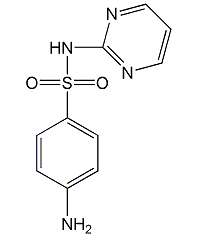
Structural formula
| Business number | 01FC |
|---|---|
| Molecular formula | C8H4Cl6 |
| Molecular weight | 312.84 |
| label |
1,4-Bis(trichloromethyl)benzene, α,α,α,α’,α’,α’-hexachloro-p-xylene, To hexachlorobenzyl, Hexachloroparaxylene, 1,4-bistrichlorotoluene, Α,Α,Α,Α’,Α’,Α’-hexachloro-p-xylene, antischistosomiasis drugs |
Numbering system
CAS number:68-36-0
MDL number:MFCD00000791
EINECS number:200-686-3
RTECS number:ZE4655000
BRN number:None
PubChem ID:None
Physical property data
1. Properties: White needle-like crystals or crystalline powder, with special odor and tasteless. It will slowly decompose when exposed to light and alkali and become acidic
2. Density (g/mL, 25/4℃): Uncertain
3. Relative vapor density (g/mL, Air=1): Uncertain
4. Melting point (ºC): 106-110
5. Boiling point (ºC, normal pressure): 312
6 . Boiling point (ºC, 5.2kPa): Uncertain
7. Refractive index: Uncertain
8. Flash point (ºC): Uncertain
9 . Specific rotation (º): Uncertain
10. Autoignition point or ignition temperature (ºC): Uncertain
11. Vapor pressure (kPa, 25ºC): Uncertain
12. Saturated vapor pressure (kPa, 60ºC): Uncertain
13. Heat of combustion (KJ/mol): Uncertain
14. Critical temperature (ºC): Uncertain
15. Critical pressure (KPa): Uncertain
16. Log value of oil-water (octanol/water) partition coefficient: Uncertain
17. Explosion upper limit (%, V/V): Uncertain
18. Explosion lower limit (%, V/V): Uncertain
19. Solubility : Insoluble in water, easily soluble in ethanol, xylene, petroleum ether and vegetable oil, etc.
Toxicological data
Acute toxicity: Rat oral LD50: 3200 mg/kg; Breeding: Rat oral TDLo: 2330 mg/kgSEX/DURATION: male 26 week(s) pre-mating; Rat oral TDLo: 2330 mg/kgSEX/ DURATION: female 26 weeks(s) pre-mating;
Ecological data
None
Molecular structure data
1. Molar refractive index: 64.32
2. Molar volume (cm3/mol): 192.0
3. Isotonic volume (90.2K): 495.2
4. Surface tension (dyne/cm): 44.2
5. Polarizability (10-24cm3): 25.50
Compute chemical data
1. Reference value for hydrophobic parameter calculation (XlogP): None
2. Number of hydrogen bond donors: 0
3. Number of hydrogen bond acceptors: 0
4. Number of rotatable chemical bonds: 0
5. Number of tautomers: none
6. Topological molecule polar surface area 0
7. Number of heavy atoms: 14
8. Surface charge: 0
9. Complexity: 161
10. Number of isotope atoms: 0
11. Determine the number of atomic stereocenters: 0
12. Uncertain number of atomic stereocenters: 0
13. Determine the number of chemical bond stereocenters: 0
14. Number of uncertain chemical bond stereocenters: 0
15. Number of covalent bond units: 1
Properties and stability
None
Storage method
Keep in a sealed container away from light.
Synthesis method
Using mixed xylene as raw material, it is first sulfonated with 98% sulfuric acid to generate m-xylene sulfonate. The oil layer containing o- and p-xylene is separated from the sulfonation reaction product, washed with water, dried, and o- and p-xylene is distilled under reduced pressure. The by-product m-xylene can be obtained by hydrolysis of m-xylene sulfonate. 1,4-bis(trichloromethyl)benzene is obtained by chlorination of o- and p-xylene: put o- and p-xylene into the reaction pot, and then add benzoyl peroxide and triethanolamine. After heating to 70°C, introduce chlorine gas under light irradiation, react at 70-80°C for 6 hours, and then raise the temperature to 100-120°C to continue the reaction until the relative density of the reaction solution reaches 1.560-1.580 (65°C), which is the end point of the reaction. Stop passing chlorine and remove residual chlorine under reduced pressure. Cool to 5°C, filter and wash to obtain crude product, recrystallize and decolorize with activated carbon to obtain finished product.
Purpose
Anti-schistosomiasis drugs. It has certain effects on liver fluke disease, amoebiasis, malaria and intestinal nematodes. However, adverse reactions to the nervous system are more common, and delayed reactions last longer.


